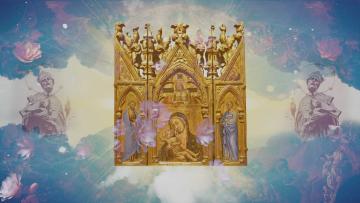Saint Claire of Assisi

Uncover Hidden Saints meanings
Clare was born in a Christian family and spent a lot of time in devotion when she was young. Her mother and sister joined the Clare monastery. On attaining 15 years, her parents proposed fro her a man but she wanted to get married on attaining eighteen. On attaining 18, she was moved by the preaching of Francis and she thought about joining getting involved in church service. One day, during a Palm Sunday night, she ran to Francis and told her how she wanted to join the church. The usual rites were carried out and she joined the Benedictine nuns near Bastia and this really angered her father.
Requesting petitions for the following:
- Addictions.
- Evils of the body or soul.
- Feast: 11-Aug
- Day: Monday
- Candle/Emblem: White. A Monstrance
- Matters Concerning; Help with drug or alcohol problems and protection against evils of body and soul.
Later on, with her sister, they moved to San Damiano church that had been built by Francis, here there were several other women who dedicated themselves to serving the Lord. Here, they spent most of the time in manual labor and prayer. Francis entitled her the rights to running the monastery and after his death; she continued to run the monastery.
Canonization of Clare
In 1253, pope innocent IV’s bull named solet annuere ascertained the continous use of Clare’s rules in the governance of Clare's Order of Poor Ladies which was the monastery that she was in charge of. After two days, Clare died aged 59. There was agreement that a church to hold the remains as her basilica was being built, meanwhile the remains were interred at San Gorgio chapel.
She was canonized as Saint Clare of Assisi on 15th August 1255 by the then Pope, Alexander IV. In 1260, her remains were transferred to the St. Clare Basilica after its successful construction. They were then buried deep under the altar. To further pay a tribute to Saint Clare, in 1263 Pope Urban IV renamed the Poor Ladies as Order of Saint Clare.
Approximately six decades after interring of her remains, St. Clare remains were moved to a new shrine in Basilica of Saint Clare, up to this day, the remains lie there
The legacy of Saint Clare
In the artist’s impressions, Clare is always drawn with a monstrance that commemorates an instance in which she managed to keep off Frederick II’s soldiers from the entrance of her convent by kneeling in prayer while displaying the Holy sacrament. This is the main distinguishing feature from the drawings for other saints.
Her feast day is marked two times in the Tridentine Calendar since 11th August was already set aside for Roman Martyr Saints Susanna and Tiburtius. On 12th August, which is a day that comes after the day she died the feast is celebrated twice. In 1960, the feast was changed to 3rd class. On making reforms to the calendar in 1969, celebration for Saints Tiburtius and Susanna was scrapped off thus paving way for her feast on 11th August. Her body was corrupted and now, the skeletons are on display in Assisi.
By Florance Saul
Aug 17, 2012







